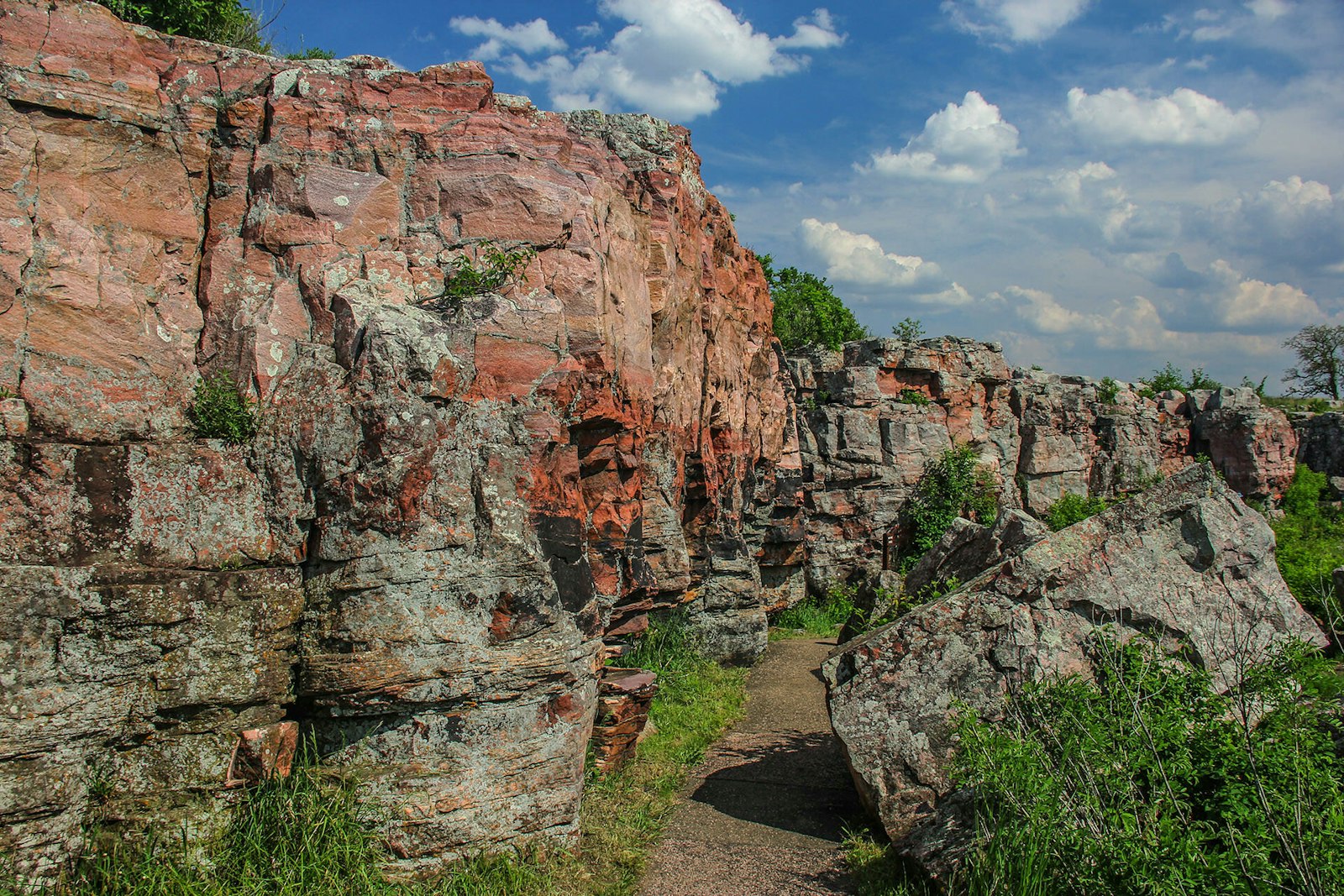
Pipestone National Monument
Pipestone National Monument is sacred to many American Indian tribes, who quarry and carve its red pipestone for prayer ceremonies.
Pipestone National Monument offers an opportunity to explore American Indian culture and the natural resources of the tallgrass prairie. Established by Congress in 1937 to protect the historic pipestone quarries, the site is considered sacred by many American Indians. Spanning centuries of use, American Indians continue to quarry pipestone which they carve into sacred pipes.
Stone pipes were long known among the prehistoric peoples of North America; specimens from 2,000 years ago have been found at Mound City in present-day Ohio. Digging at this Minnesota quarry likely began in the 17th century, a time which coincided with the acquisition of metal tools from European traders. Carvers prized this durable yet relatively soft stone, which ranged from mottled pink to brick red. By all accounts this location came to be the preferred source of pipestone among the Plains tribes. By about 1700, though, the Dakota Sioux controlled the quarries and distributed the stone only through trade.
Park Updates
-
Update$4.4 Million to Fund 99 Open OutDoors for Kids Projects for 2023 – 2024 School Year, Hitting Program Milestone
-
UpdateInaugural Cohort of Inclusive Storytelling Grantees Announced
-
UpdateApplications Now Open for 2023-2025 Mellon Humanities Postdoctoral Fellowships